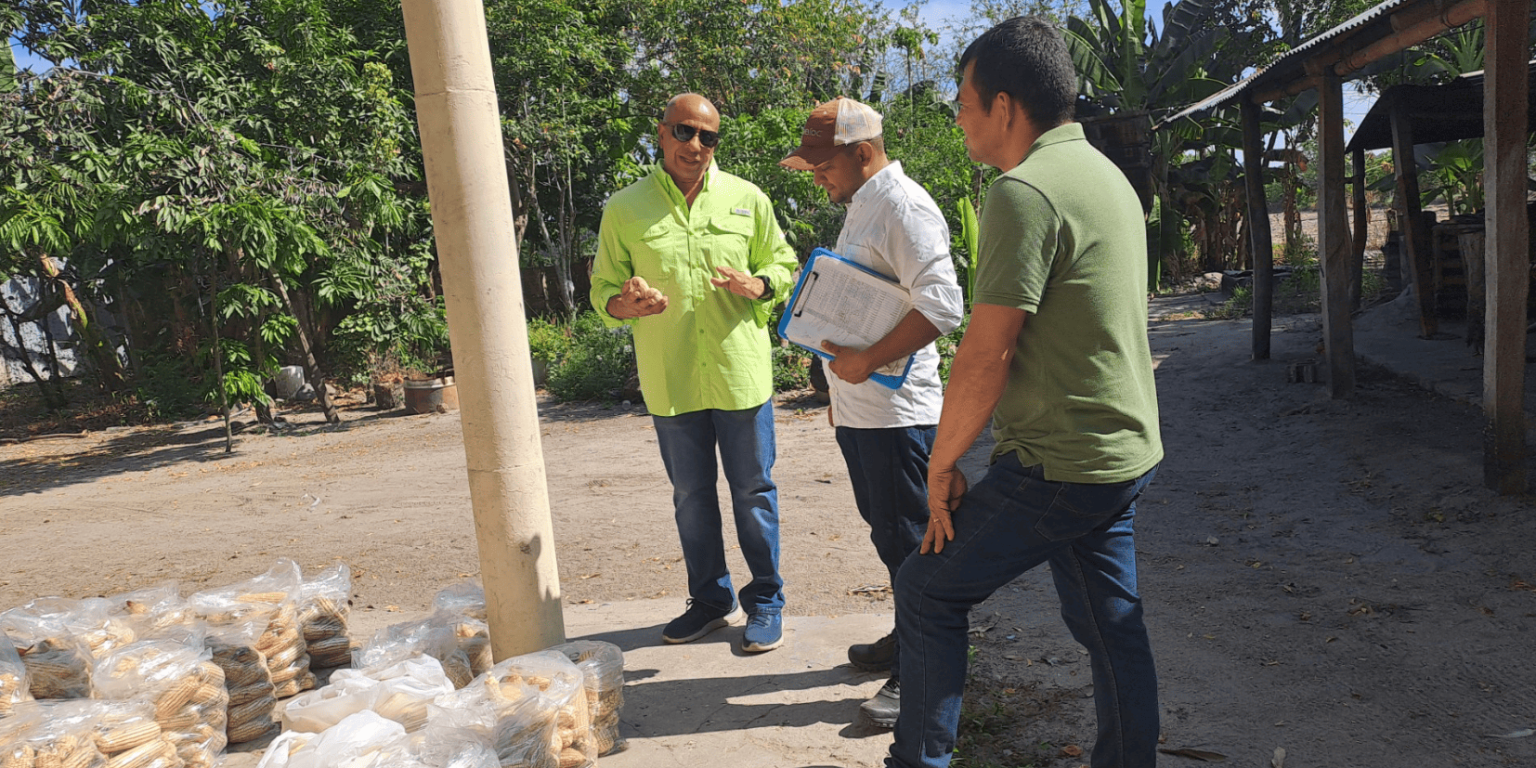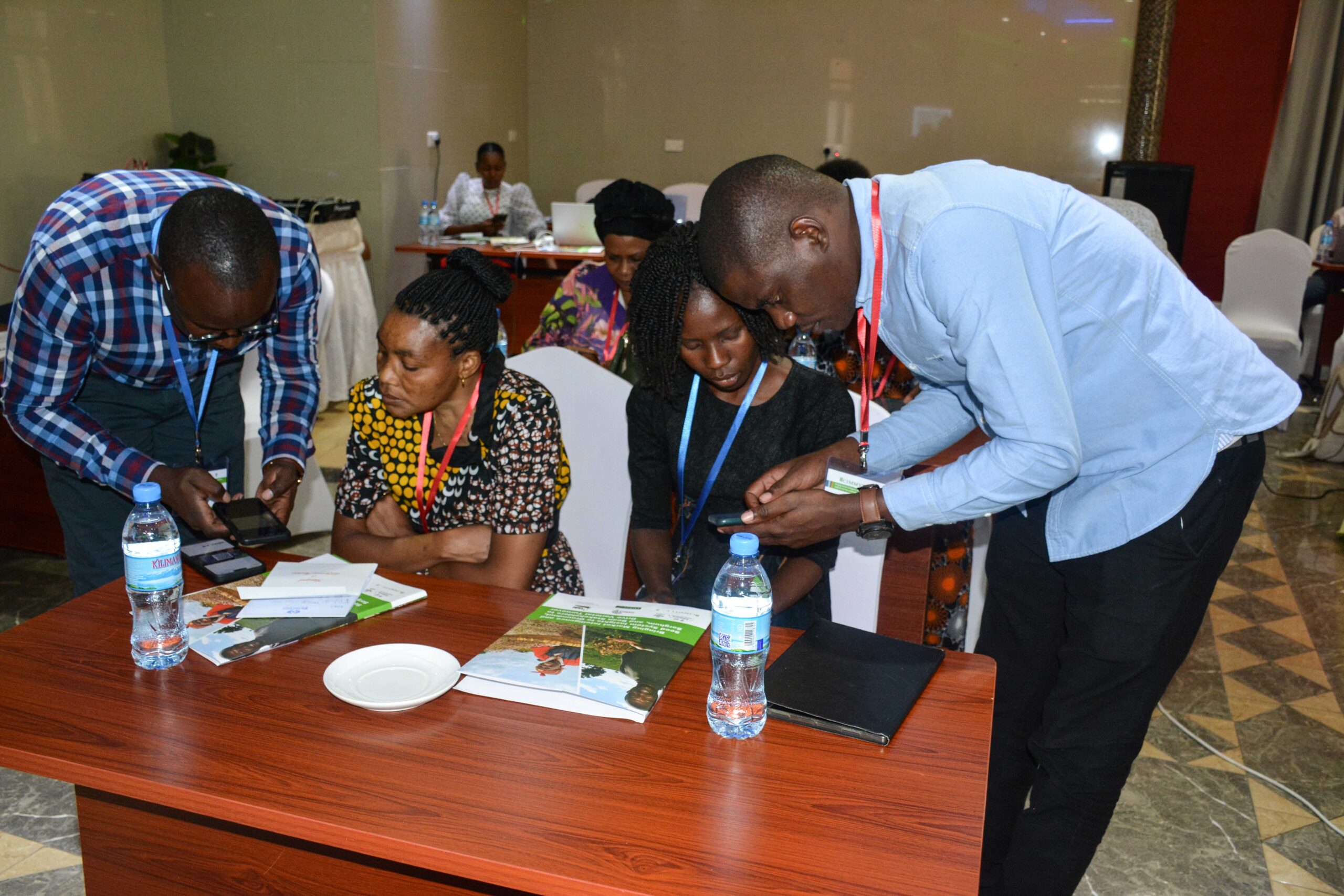In the ninth edition of Catalysts of Change: Women Leaders in Science, Swati Nayak, scientist and South Asia Lead for Seed Systems and Product Management at the International Rice Research Institute (IRRI), shared that scientific innovation is of no use if it does not reach the smallholder farmer and other stakeholders.
“I have engaged extensively with the community, women, institutions, and rural youth to ensure that their choices, voices, and participation are respected,” she said.
Inspired by great minds in the science and rural innovation space, such as Dr. Norman E. Borlaug, Verghese Kurien, and Dr. M. S. Swaminathan, Swati learned early in her career that “when we dream big, we also need to ensure that we channel our energy towards larger social transformation and not just personal achievements.”
Opening the session, Bram Govaerts, Director General of CIMMYT, expressed the need for more women leaders and role models in science institutions. “In this series, we highlight women who are leaders in all sorts of capacities—in the field, in advanced research, in government, in their village, in the community—because we believe that leadership styles can take many different forms,” he said. He then introduced Swati, the 2023 recipient of the prestigious Norman E. Borlaug Award for advancing rice seed systems.
Seeds for livelihood, empowerment, and equity
Swati shared an overview of her research, highlighting her direct engagement with community women and smallholder farmers through a variety of innovative and far-reaching delivery models.
“Our work is about how to take seeds from the lab to the farmer, the market, and the field. Beyond how we deliver genetic gains to the farmer’s field, it is also about their livelihood, empowerment, and equity, which play a central role in our interventions,” she said.
Swati illustrated how seeds have played a pivotal role in shaping the Green Revolution, changing the course of food security in many developing countries. Even minimal use of quality seeds can lead to a 15–20% increase in productivity. “To realize those yield gains, it is critical to ensure varietal awareness, seed access and affordability, and continuous and sustained adoption of novel germplasm varieties by farmers,” she shared.
“Low-cost technology that includes improved and novel germplasm, bred by our scientists, can meet the challenges of varietal turnover, especially in rice-growing countries, where farmers still grow age-old varieties and the seed replacement rate is very low,” she added.
Creating sustainable and equitable seed systems for farmers
Seeds are not just farming inputs but fully fledged products operating in a competitive market space, Swati mentioned. “They carry value beyond production and productivity, offering business potential and opportunities that can strengthen livelihood opportunities for farmers,” she explained.
She emphasized the importance of decentralizing delivery mechanisms and convincing farmers of the value proposition of new varieties versus older ones. “By considering market factors and addressing the needs of smallholders, we can create a more equitable and effective seed distribution system,” Swati said.
Embracing change and multistakeholder engagement
Swati noted the need to create interlinkages between the market and society. She shared her team’s comprehensive programs focused on seed system strategies and the changes they have embraced—how they improved communication with extension departments and institutions in different countries to promote and scale specific varieties, brought together the breeding community and extension departments through advancement meetings and discussions, held blind reviews of farming systems across market segments, and involved farmers in evaluating these competitive products against popular market-leading varieties.
“This approach has created more investment opportunities for large-scale partnerships with various institutions to ensure positioning, demand creation, and supply stream strengthening of new varieties. We are also engaging with strategic institutions to diversify and decentralize delivery mechanisms,” she said.
She highlighted the collective enterprise model where women farmers, mixed-group farmers, and other existing groups are mobilized for seed production. Traditional extension systems have largely concentrated on technical training related to quality seed production while neglecting essential aspects such as business acumen, regulatory compliance, networking, and marketing connections necessary for farmers to engage in seed production as a viable enterprise.
To address these gaps, Swati explained how they went beyond quality seed production to build broader skill development—including interactive platforms, buyer-seller meetings, regulatory interactions, direct conversations with farmers, and guidance on the process of registration and quality inspection stages. “This has led to gradual growth and confidence in the institutions we were working with, enabling them to move from just being seed producers to becoming seed entrepreneurs and selling large volumes of seeds,” she said.
Women role models and working beyond silos
“In my career, women farmers have been my source of inspiration because I have seen tremendous potential in them. Despite systemic constraints, they flourish,” Swati said when asked about her role models.
She highlighted the importance of empowerment and self-sufficiency. She shared that to increase the number of women in the agriculture sector; the focus should be on co-creation—working together rather than in silos. “This involves integrating women and men, bringing in multidisciplinary teams, and respecting each other’s views,” she said.
Swati also discussed the need for greater representation of women in decision-making and leadership roles. “Quality matters, but quantity matters as well. Creating a flexible and adaptable environment for women to be creative and to think outside the box is essential,” she suggested.

 Climate adaptation and mitigation
Climate adaptation and mitigation 
